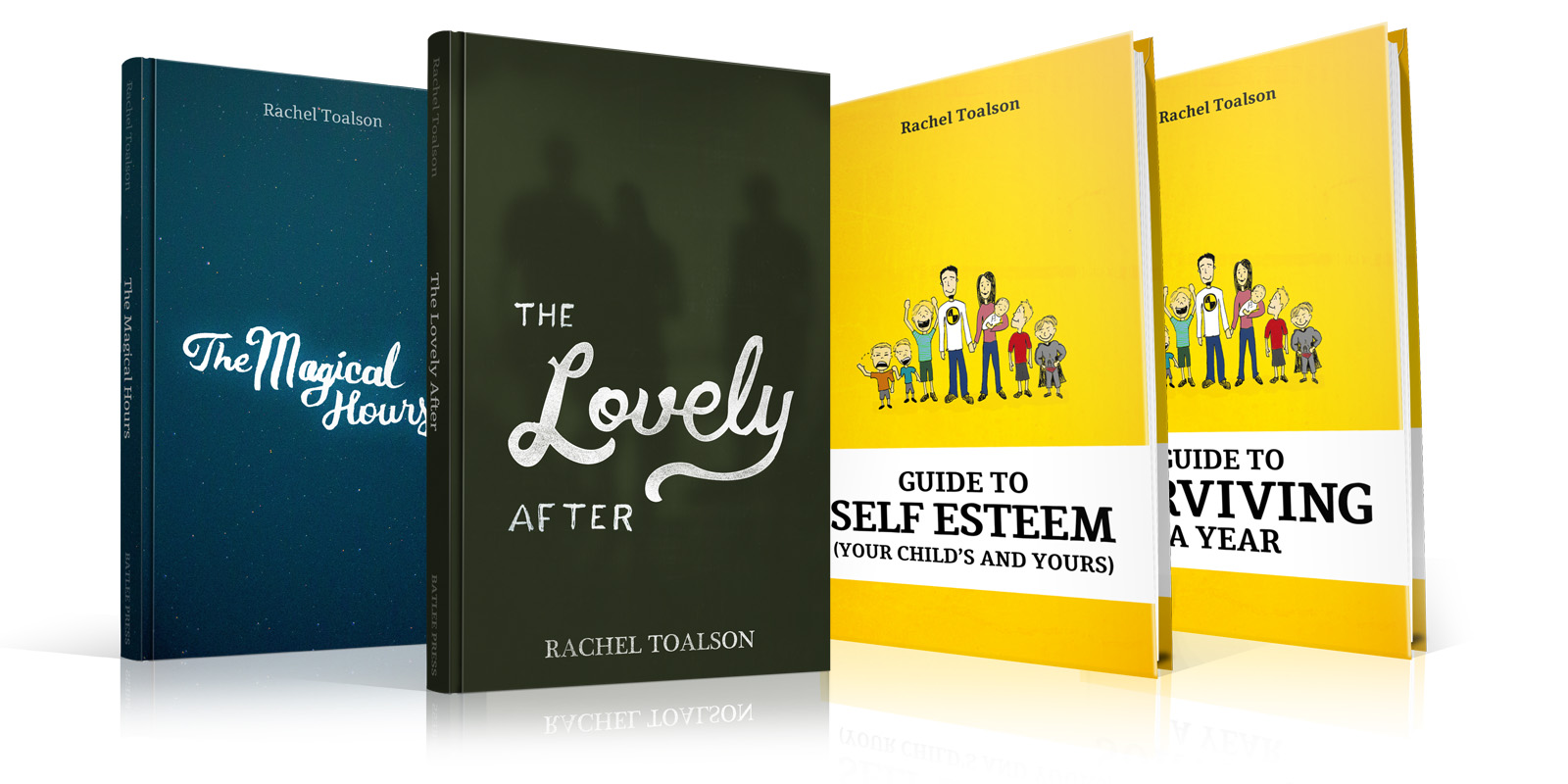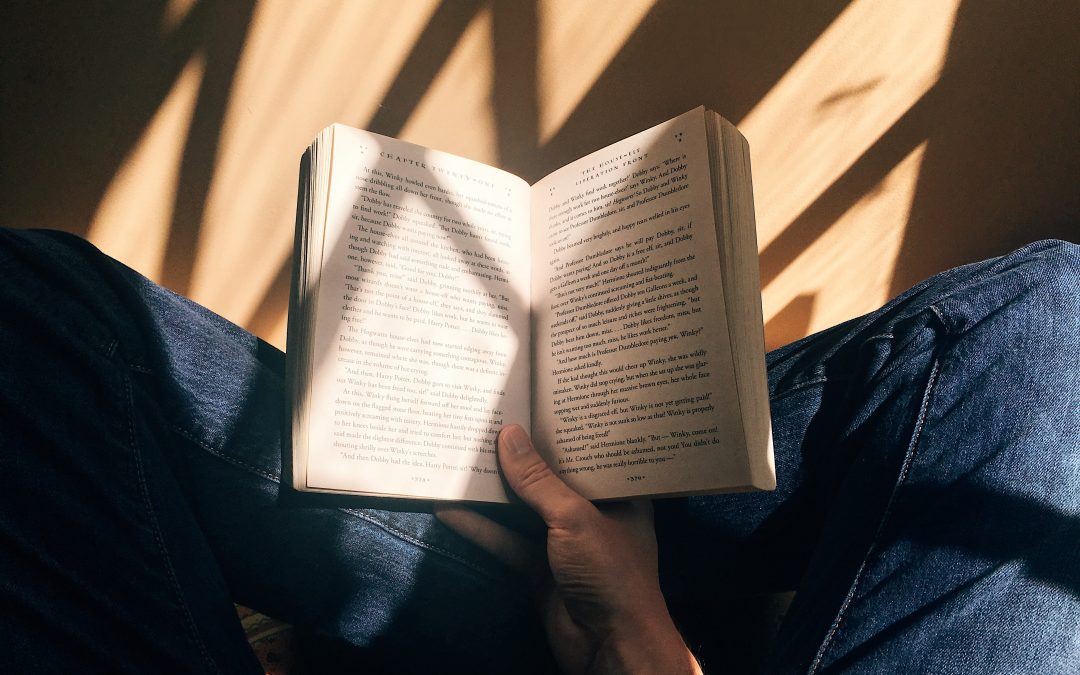
by Rachel Toalson | Books
1. Reading: I just finished Erin Entrada Kelly’s newest middle grade book, Those Kids from Fawn Creek. What I liked most about this one is that it humanizes the people who make mistakes, who maybe have a moment (or more than a moment) of meanness. That’s an important lesson for kids to learn and for all of us to remember. We’re all just doing the best we can, right? (Erin Entrada Kelly won the 2018 Newbery medal with Hello, Universe, and her middle grade book We Dream of Space was a Newbery Honor book in 2021. Both are worth checking out.)
2. Reading: I’m currently on a research frenzy, reading everything I can about the 1900 hurricane in Galveston, which was the deadliest natural disaster and the worst hurricane in U.S. history. (Why am I researching? For a story, of course!) The best book I’ve read about it is Erik Larson’s Isaac’s Storm: a Man, a Time, and the Deadliest Hurricane in History. Larson is one of my favorite nonfiction writers. He’s written many historical books. I haven’t read them all but can highly recommend In the Garden of Beasts: Love, Terror, and an American Family in Hitler’s Berlin; Dead Wake: the Last Crossing of the Lusitania; and Devil in the White City: Murder, Magic, and Madness at the Fair that Changed America. Larson also released his first novel, No One Goes Alone, last year. It’s been on my TBR list for a while now, called “a ghost story grounded in history.” Who wouldn’t want to read that?
3. Reading: As a mom trying to still be productive and creative while my kids are home for the summer, I found this piece particularly relevant. And cool. And not just for moms. Or writers. How many of us find our “second acts” later in life? Doing what we love and loving what we do? It’s never too late to become who we want to be and do what we dream of doing.
4. Reading: Ellen Hopkins, one of my favorite novel-in-verse authors, has a new middle grade novel in verse out: What About Will. Hopkins is best-known for her young adult fiction (The You I’ve Never Known is so far my favorite) but started publishing in the middle grade space a few years ago. I liked this one so much I put it on several of my kids’ summer reading lists. Another of Hopkins’s middle grade gems: Closer to Nowhere. I highly recommend both!
5. Watching: On the TV side, my husband and I are currently making our way through Community. This is an older show, and I know we’re late to the party, but we’re really enjoying using it as a “palate cleanser” after some heavier shows (including Netflix’s Stranger Things, which recently released its fourth (and, I believe, final) season. I need some laughter after the terror!). You can watch Community on Netflix.
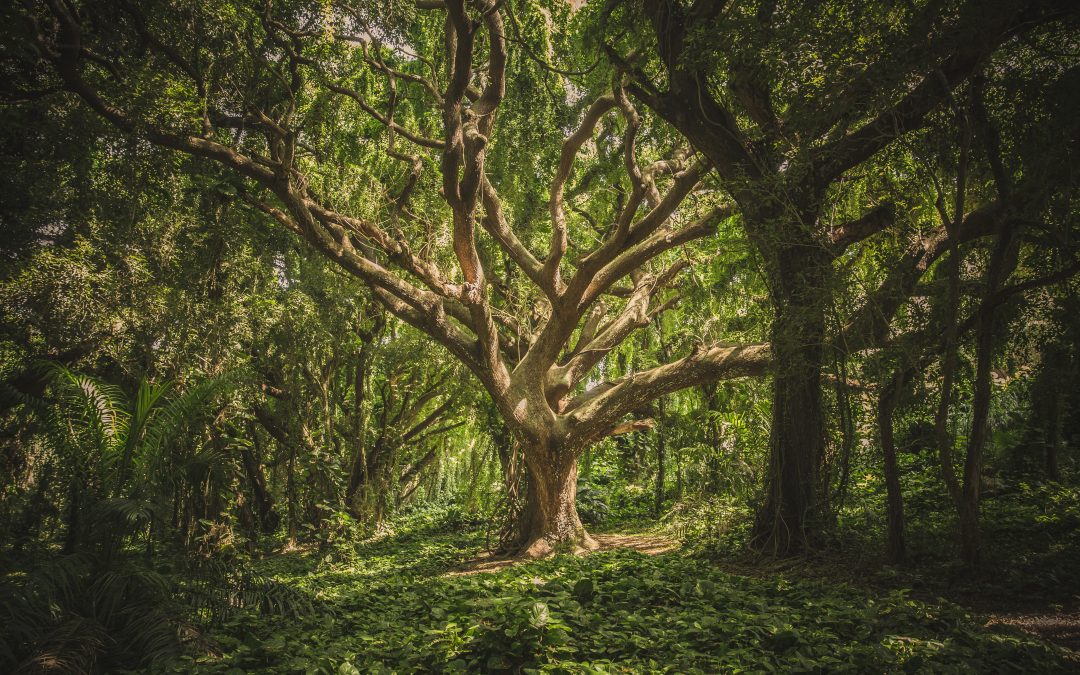
by Rachel Toalson | Books
1. If you’re looking for a fantastic middle grade fantasy series, look no further than Angie Sage’s TodHunter Moon series. It’s three books—PathFinder, SandRider, and StarChaser—and so full of personality and humor, and I cannot say enough about it. Angie Sage is also the author of the seven-book Septimus Heap series, which you might want to read first. I read it years ago and (shhh…this is a secret) thought it was even better than Harry Potter. Sage’s worldbuildling is fantastic, and her characters are intelligent, hilarious, quirky, and thoroughly entertaining.
2. I really enjoyed this piece in The Atlantic. It’s a long read, but if you’ve felt the divide that is our world today, it’s well worth a look. Jonathan Haidt, the author of the piece, shares a look at the ways social media has perpetuated the divide. It’s very interesting to consider.
3. My husband and I sped through episodes of Apple TV’s The After Party. It was so well done! It follows characters who have just gone to their high school reunion and met up at an afterparty—where someone is murdered. I don’t typically watch murder mysteries, but this one was hilariously quirky. What was so brilliant about it was that each character told their own story in their own way. As an author, this was delightful to me. We’re always told that everyone in our stories, whether side characters or main characters, are the “heroes of their own stories.” And Apple TV did a fantastic job of showing that on the screen. This might be the only show I ever watch a second (or third) time, just to pick up on the things I missed the first time.
4. Speaking of Apple TV, they recently released a new series called Roar, pitched as “darkly comedic feminist fables.” That sounded perfect for me (plus there are some superstar actresses in it). I started watching it this weekend, and it’s both disturbing and hilarious at times. The episodes make you laugh, cry, cringe, wonder, shout, and do all the things good shows make you do. Do yourself a favor and binge in honor of Mother’s Day!
5. I recently finished Darcie Little Badger’s book A Snake Falls to Earth. If you haven’t yet read this one, it should be on your to-be-read list. The book earned a Newbery Award Honor and was long listed for the National Book Award this year, and it’s full of rich folklore and feels like a old story told in a fresh way. Really well done. Darcie Little Badger is also the author of Elatsoe, which was also a great read!
(Photo by veeterzy on Unsplash)

by Rachel Toalson | Books, This Writer Life
I once heard a writer say that she could usually finish all the research she needed to do for a story in about a week.
Meanwhile, this was my research stack for the summer.

It could be because I’m a former journalist, but one of the biggest challenges for me is knowing when to quit research.
It might seem strange to think about a fiction book needing so much research, but part of our responsibility (or so I believe) as writers is making sure that whatever we’re trying to portray—whether it’s a character who’s a twin (and don’t ever assume that just because you’re the parent of twins, like I am, that you completely understand the neurological and psychological characteristics of twins; I’ve learned so much from my research, which has, fortunately, also informed my parenting), or a place that’s becoming swallowed up by gentrification or a character who’s obsessed with trees—is portrayed accurately within the scope of our story.
The first thing I do during my research stage is put a bunch of books on hold at my local library. Usually all the holds come up at once and then I have to decide which books I’ll read first. Some of the books are more helpful than others for what I’m specifically trying to do, but I like to read as many of them as I can; I don’t think you can ever do too much research (unless, of course, it’s your excuse to avoid writing).
My second wave of research is interviewing people who have lived the lives I’m trying to portray. For example, I currently have on submission a young adult novel about suicide and depression. Even though I’ve experienced both of these things in my life (I was never suicidal, but someone very close to me was), I wanted to reach out and talk to more suicide survivors and their parents to record their experiences. Even if I don’t use any of what I’ve collected from these brave, resilient, remarkable teenagers, the more information I have, the more it helps me better portray whatever issue I’ve chosen in a story.
Which is much better than relying on stereotypes.
So take your time researching. You never know what you’ll find or just how much it will improve your story.
(Photo by All Bong on Unsplash)
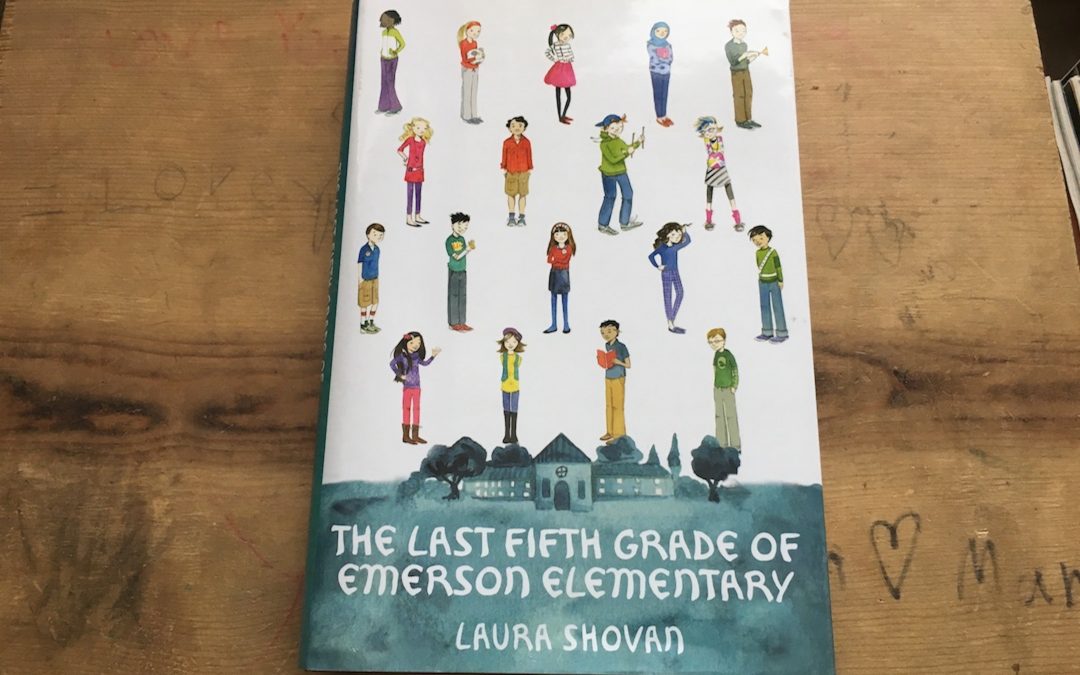
by Rachel Toalson | Books
I’ve always loved novels in verse, and lately I’ve been exploring more and more of them; they seem to be a hidden genre of storytelling that is lovely, insightful, and satisfying to my poet’s heart.
Plus, I’ve written a novel in verse. I’m trying to explore and better support my fellow poets.
For the last several months, I’ve been sort of touring through the well known and little known titles that are novels in verse. The Last Fifth Grade of Emerson Elementary, by Laura Shovan, was one of the most spectacular of my recent reads.
I don’t know if it’s because I have a son who recently graduated fifth grade and will be going into middle school next month or if it’s simply that this was a story well told (it was, and it’s likely both), but I could not stop thinking about this book for days after I’d finished reading it.
It was a phenomenally executed novel in verse, with so many compelling characters (each student in a class of fifth graders is given several poems throughout the book) and their everyday realities and anxieties and home happenings captured in verse. Each poem told a story about the student who had written it, and yet all the collected poems told a larger story about an elementary school getting closed down for demolition and the students who wanted to protest that future. It was amazingly intuitive and brilliant.
Here are three things I liked most about it:
- The poetry. This book was like nothing I’ve ever read, a combination of structured poems and free verse—but what stood out most about each of the poems was the characterization captured within. It was so well done I’m misting up even as I write these words.
- The emotions. Because the poems were written by different students and sort of shuffled up throughout the book, they subtly showed the struggles of each student: some were dealing with parental divorce, conflicts with parents, conflicts with friends, all the things fifth graders deal with in their lives. There was tension and a story told in every poem, however long or short.
- The concept. Not only were these kids finishing up elementary school, which is a huge transitional time in a kid’s life, but they were also trying to save their school from being torn down—so double the transition (they would never again see this place where they’d spent six years of their lives; that’s a difficult thing). It really was brilliantly done.
Shovan just came out with a new novel, Takedown, which is not written in verse but contains her poetic language and her insightful character development. It will need a post on its own.
You’ll laugh, you’ll cry, you’ll feel so many emotions reading The Last Fifth Grade that you’ll never forget it. Truly a classic that should be read aloud to every fifth grade student so they feel seen and heard and understood. Thanks, Shovan, for giving me this gift to read with my son.
The above is an affiliate link. I only recommend books that I personally enjoy. I actually don’t even talk about the books I don’t enjoy, because I’d rather forget I ever wasted time reading them. But if you’re ever curious whether I’ve read a book and whether I liked or disliked it, don’t hesitate to ask.
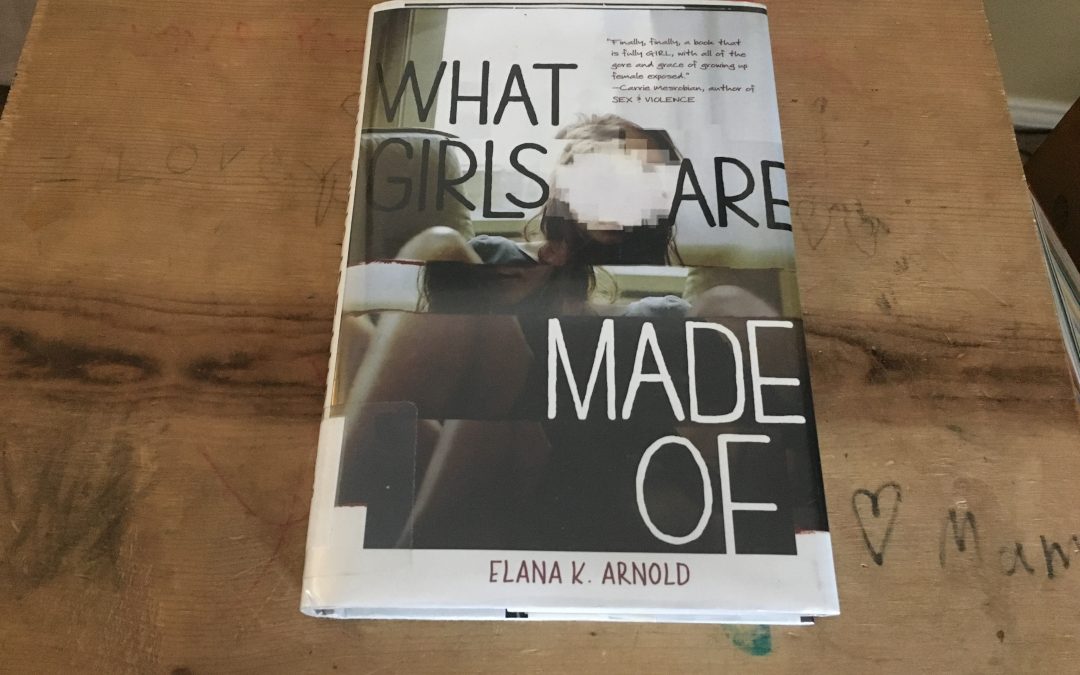
by Rachel Toalson | Books
Every now and then I am introduced to an author who has been around for a while but who has fallen under the radar for me. I’m always delighted when that author turns out to be one whose style I absolutely love and admire.
Such is true of Elana K. Arnold. While I have been making my way through her backlist, my favorite novel so far is What Girls Are Made of, which was a 2017 National Book Award finalist.
It’s a phenomenal book. It was interesting, important, and a great contribution to young adult literature—proving to teenage girls that they are seen and they can be more than who they are told to be. I wish a book like this had existed when I was a teenage girl.
Here are three things I enjoyed the most about it:
The intermissions. That’s what I’ll call them. They were stories that the protagonist, Nina, had written about chickens and eggs and female saints and all the ways, metaphorically, that women are devalued. These intermissions interrupted the flow of the narrative but served an important purpose.
The character. Though some of Nina’s decisions were not ones I would have made myself, I really enjoyed her personality and the growth and change she experienced in the story—one that showed her she was good enough on her own, as a young woman.
The structure. Not a whole lot happened in the book, but what did happen was intriguing, and it was interspersed with such interesting flashbacks and the stories that Nina had written for her English project. So even though not a lot happened plot-wise, a lot happened theme-wise, which are sometimes the best stories.
The first line was compelling and intriguing:
“When I was fourteen, my mother told me there was no such thing as unconditional love.”
What? You have to know more about this woman and her fourteen-year-old daughter.
Overall, What Girls Are Made of was a book I would likely read again. I loved its message and its shape and its truth. Lovely, real, hard, and ultimately necessary book for today’s teen readers.
The above is an affiliate link. I only recommend books that I personally enjoy. I actually don’t even talk about the books I don’t enjoy, because I’d rather forget I ever wasted time reading them. But if you’re ever curious whether I’ve read a book and whether I liked or disliked it, don’t hesitate to ask.
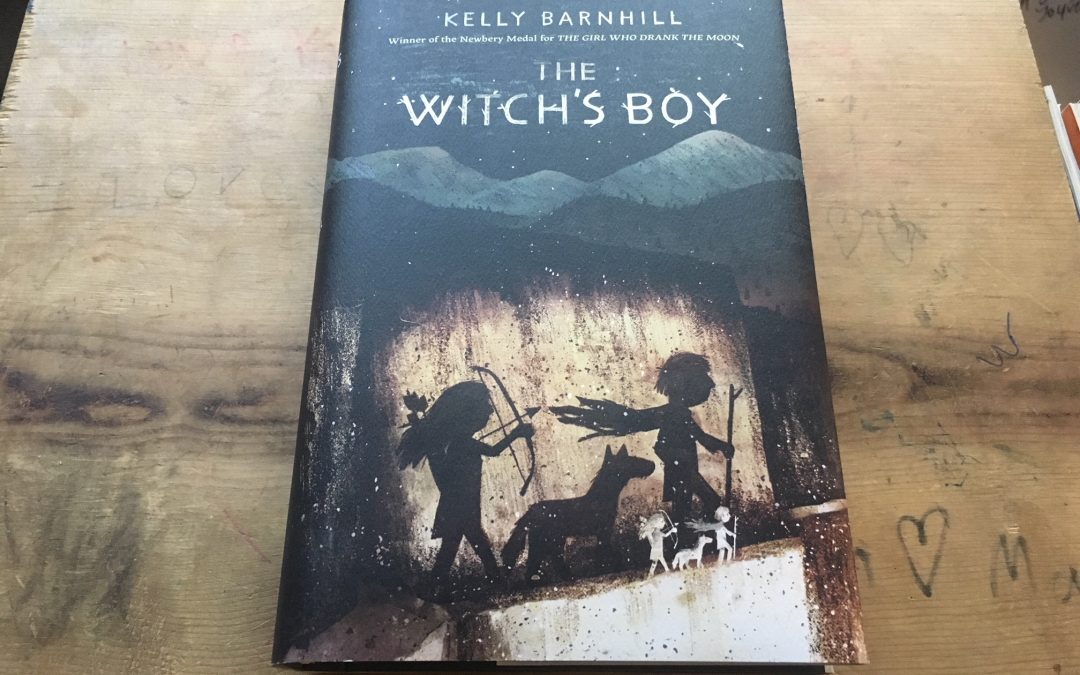
by Rachel Toalson | Books
If you know my taste in literature (I tend toward the lyrically written books), it might not surprise you that I am a hardcore Kelly Barnhill fan. I actually jumped on the bandwagon of hardcore fan after she won the Newbery award last year for The Girl Who Drank the Moon; I immediately fell in love with her writing style and her stories.
And thankfully, she had another delightful middle grade book for me to read: The Witch’s Boy. First I borrowed this book from my library, but I loved it so much I had to buy it for my home library, knowing that this is a book I will read again—possibly every year. I loved it at least as much as The Girl who Drank the Moon.
The Witch’s Boy is a middle grade fantasy about magic, kingdoms, and heroism. It was sweet and intriguing and absolutely beautifully written (I’ll share a couple of examples below).
Here are three things I enjoyed most about it:
The language. Of course, as a poet, I’m a sucker for books with beautiful language. Barnhill has such a satisfying style of writing (for me), a lyrical language that sounds like poetry on the page—proving that you don’t actually have to write a novel in verse; all you have to do is infuse poetry into your prose. Her descriptions, her metaphors, the way she encapsulates action in the perfect collection of words…I feel like I’m gushing, so I’ll stop. Just know that it’s beautiful.
The characters. Ned and Áine were such starkly drawn characters, and you wanted them to succeed in whatever they did. They were strong, resourceful, and brave—the kind of heroes you root for when the going gets tough.
The world. Barnhill also has a wonderful imagination and creates these elaborate yet simple worlds with witches, old queens, secret kingdoms, magic stones, bandits marked by tattoos. Spending time in her world is delightfully fun.
Here’s the first line of The Witch’s Boy:
“Once upon a time there were two brothers, as alike to one another as you are to your own reflection. They had the same eyes, the same hands, the same voice, the same insatiable curiosity. And though it was generally agreed that one was slightly quicker, slightly cleverer, slightly more wonderful than the other, no one could tell the boys apart. And even when they thought they could, they were usually wrong.”
I was immediately drawn in to this story, which might possibly be because I’m the parent of identical twins. And what Barnhill writes is entirely true.
Here’s another example of Barnhill’s beautiful language:
“The sun hovered over the edge of the sky, lurid and fat as an overripe peach, before slumping toward night. The light oozed overhead in garish colors; it was a sky that announced itself.”
Can’t you just see it?
Oh, how I love this book. You probably will, too!
The above is an affiliate link. I only recommend books that I personally enjoy. I actually don’t even talk about the books I don’t enjoy, because I’d rather forget I ever wasted time reading them. But if you’re ever curious whether I’ve read a book and whether I liked or disliked it, don’t hesitate to ask.








